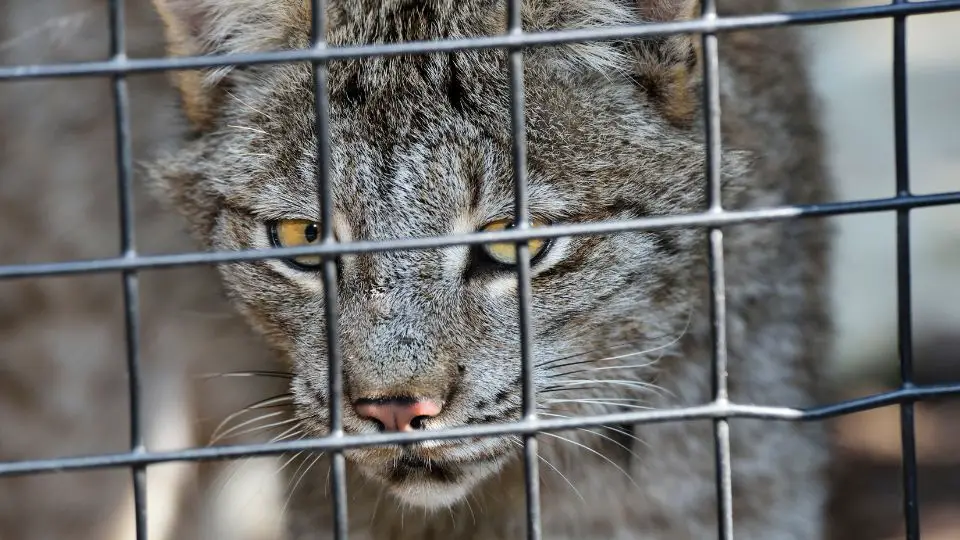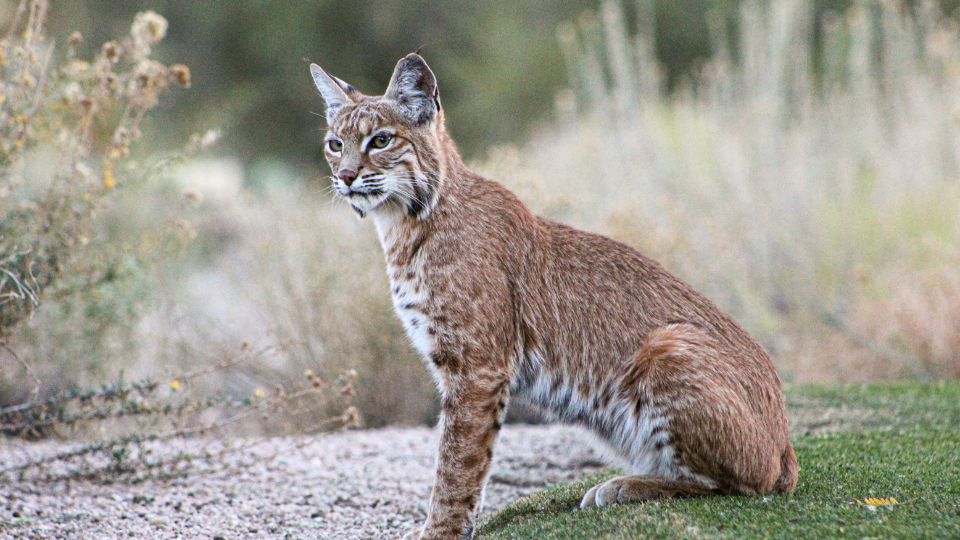Trapping a bobcat safely involves: choosing the right type of trap, set in the appropriate location, utilizing the optimal bait, and checking the trap frequently to ensure the wellbeing of the bobcat.
Bobcats are fierce predators, and these felines can be found across North America. While they rarely attack humans unless aggravated, they threaten livestock and pets. Domestic animals, including miniature pigs, goats, lambs, poultry, and house cats, are prey for these strong cats.
A bobcat lingering around your home threatens not only you and those around but also small pets or animals because of their sharp teeth and claws. For this reason, knowing how to trap a bobcat safely is essential.
If you’re looking for ways of trapping bobcats safely, there are a few things you need to know:
Table of Contents
Traps
For starters, you must choose the right type of trap. These include live traps, foothold, or body-gripping traps. Then you must set an effective trapline.
Location
Second, set the trap in an appropriate location. Once you have chosen a suitable trap, you must set it up in a proper place. Bobcats prefer areas with dense vegetation, so setting the trap in such an area will increase your chances of success.
Bait
Third, you must use the right bait to lure a bobcat into the trap. This ensures you can safely and successfully trap a bobcat.
Checking the Trap
Finally, check the trap regularly. Once you have baited the trap, it’s essential to check it regularly to ensure that the animal is still alive and well. If the animal appears to be suffering, you will need to release it immediately.
Is It Legal To Trap A Bobcat?
Bobcats resemble bigger versions of ordinary cats, meaning they’re fun to spot in the wild. They’re also popular prey for hunters. Bobcat hunting and trapping is a popular pastime in many states.
Some people hunt for sport, while others do it for the fur. Bobcat fur is precious, and a single pelt of the furbearer can sell for hundreds of dollars.
Whether you do it for fur or sport, it is common to wonder whether it’s legal to trap a bobcat. Actually, it depends on your state and county rules.
In some states, like Alaska, it is perfectly legal to trap a bobcat as long as you have the proper permits. Other states, like California, strictly prohibit trapping bobcats. If you want to trap a bobcat, check your state’s regulations first.
You could pay a fine or face jail if you trap a bobcat without the proper permits. Additionally, ensure you know your state’s trapping season. If you’re thinking about trapping a bobcat, check your state’s regulations first.

What Is The Best Trap For Bobcats?
You can trap the raccoon with body-gripping, foothold, or live traps. Each bobcat trap has its advantages and disadvantages.
Gripping Traps
Gripping traps are the most commonly used type of trap for bobcats. Once put on the ground, the feline walks over them, triggering the trap to close around its body.
The main advantage of these traps is that they are very efficient at catching bobcats. However, they can also be dangerous to other animals and humans if not set up correctly.
Foothold Traps
Foothold traps are another popular type of trap for bobcats.
Once you put them on the ground, the cat steps into them, triggering the trap to close around its foot. You can choose between coil-spring foothold traps or long spring foothold traps. These types of traps are smaller and ideal for limited spaces.
Foothold traps stability, small size, strength, and speed make them practical for trapping bobcats. Long spring foothold traps are heavy and big-sized. Their size is a disadvantage, while their weight is handy when utilized in a submersion set.
Live Traps
Live traps are the least common type of trap for bobcats. The cat walks into the cage trap when you put them on the ground, triggering the door to close behind it.
The main advantage of these traps is that they are safe for other animals and humans. Also, releasing a bobcat from live traps is more effortless than a foothold. Their drawback is that setting up can be challenging.
The best trap for bobcats depends on your specific situation. A live trap may be the best option if you want an effective and safe trap. If you are looking for a trap that is easy to set up and more likely to catch a bobcat, a body-gripping or foothold trap may be the better option.

What’s The Best Bait For Trapping Bobcats?
A common attribute of the bobcat population is that they are carnivores meaning fish, muskrat, and meat are the best attractants for trapping them. The rule of thumb is to use food with a pungent smell as it proves irresistible to bobcats.
Use baits such as mackerel, sardines, hot dogs, and other spiced meat. You can also use peanut butter as bait. Avoid using sweet-smelling baits like honey as bobcats are not attracted to them.
When choosing the right bait, ensure it’s fresh and has a strong smell. You can add garlic or other spice to make the bait more fragrant. Try different baits to see which one works best in your area.
How Can You Get A Bobcat Out Of A Trap?
If you’ve set a trap and caught a bobcat, you may be wondering how to get the bobcat out. It is prudent to call your local wildlife authorities.
They boast the experience and equipment to safely remove the bobcat from the trap. Once the bobcat is out of the trap, they will likely release it into the wild.
Alternatively, you can try to remove the bobcat from the trap yourself. Doing this isn’t prudent, as bobcats can be dangerous animals. Wear protective clothing and gloves if you try to remove a bobcat from a trap.
Approach the bobcat slowly and carefully, and cover the trap with a blanket or towel so the bobcat can’t see you. Once you’ve covered the trap, you can try to open it and release the bobcat.
Again, it is best to leave this to trained professionals.

What To Do Once You Trapped A Bobcat?
The best thing to do once you’ve trapped a bobcat is to remove and release them back into the wild.
Because of a bobcat’s ability to travel long distances, it is prudent to take them at least 10 miles, if not more. You may want to consider finding a wildlife rehabilitation facility that can take the bobcat in if you’re uncomfortable releasing them back into the wild.
Consulting with your state’s Fish and Wildlife management department is a good idea. You will want to know if any regulations or permits are necessary to relocate or release the animal. The local authorities will be able to give you specific instructions on how to proceed.
Alternatively, you could contact a big cat animal sanctuary or professional animal control service if any of these is available in your area. Of great importance to note is that bobcats can turn out to be dangerous.
Consequently, avoid handling the wildcat yourself unless it is absolutely necessary.

